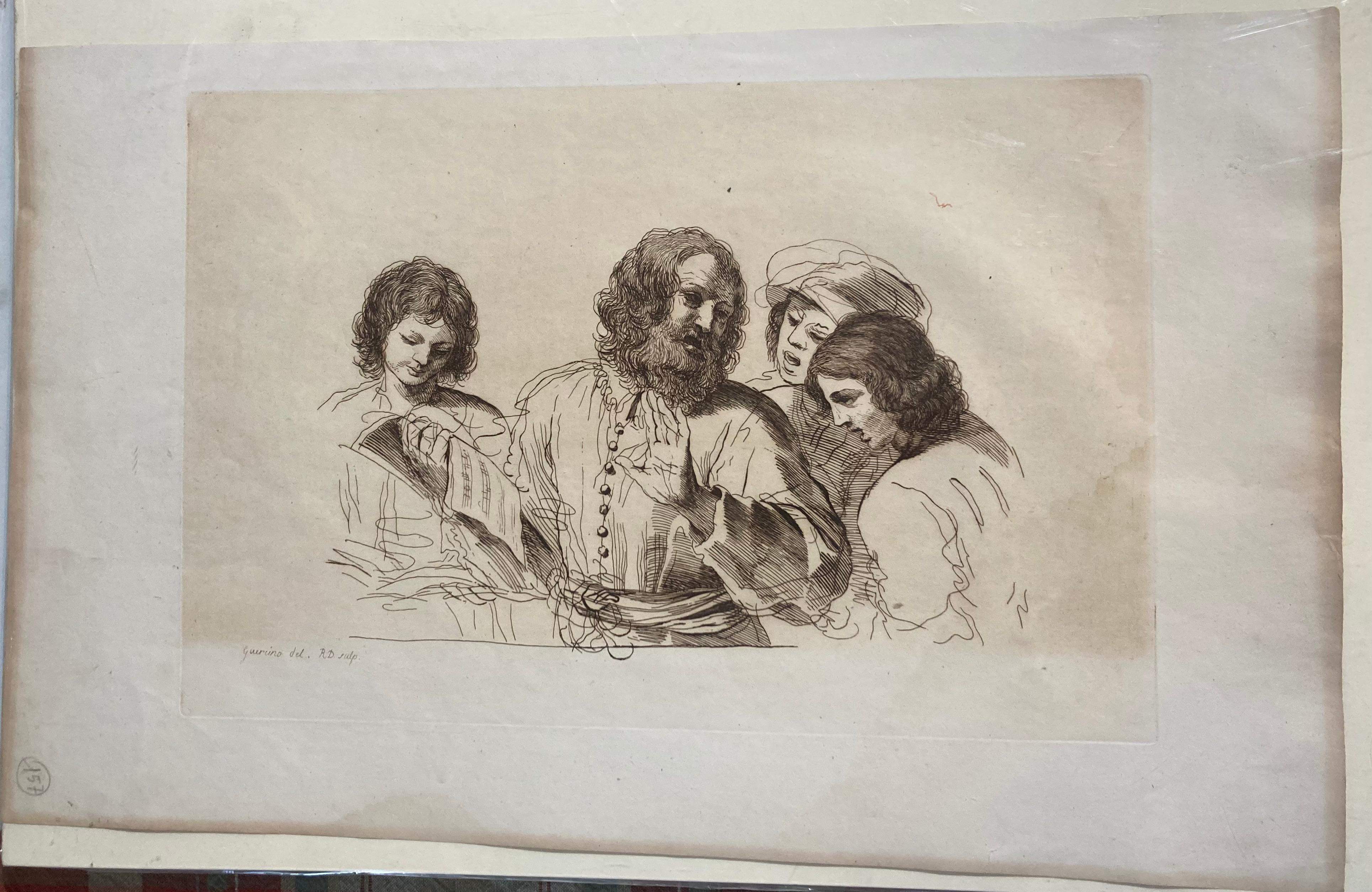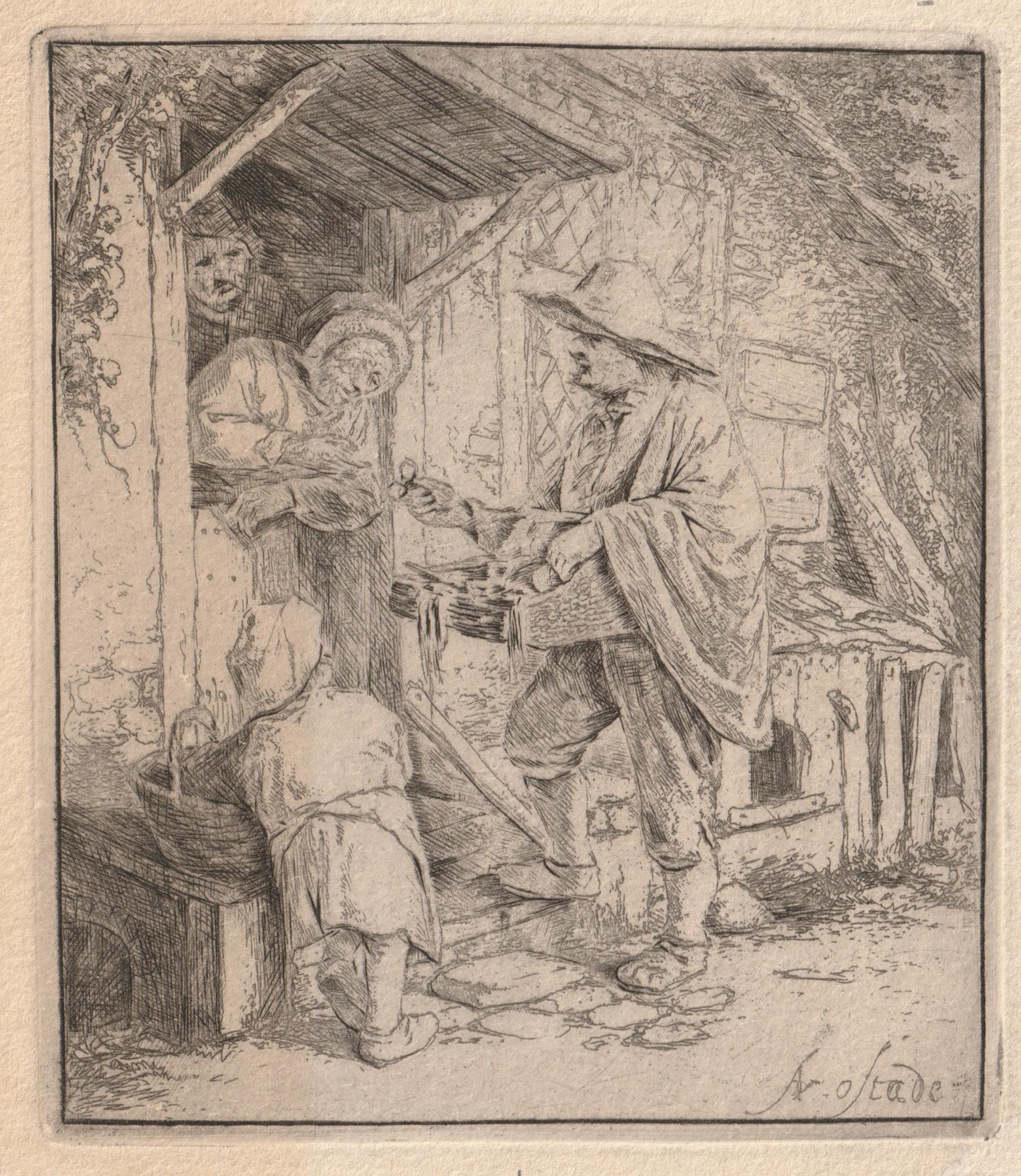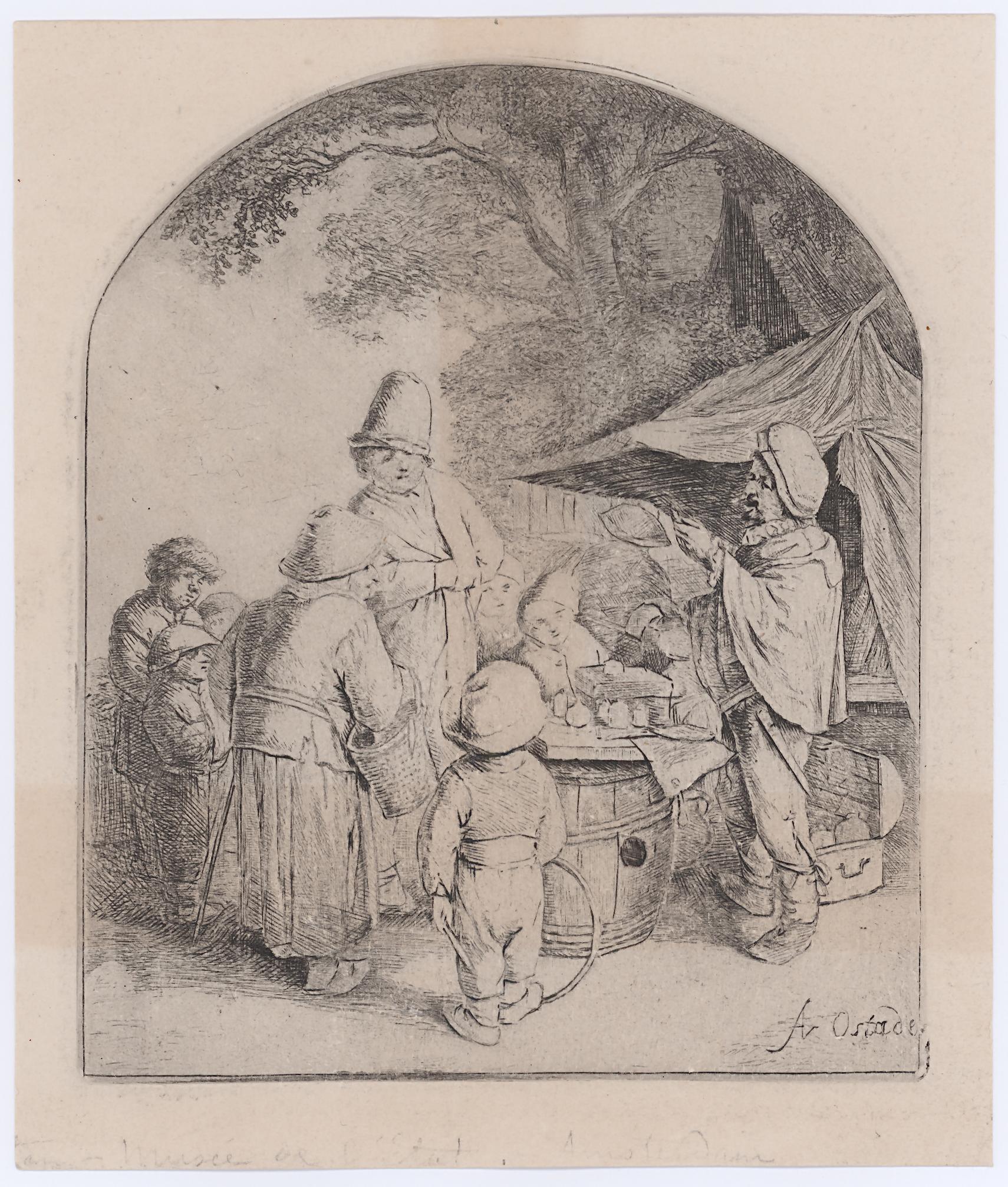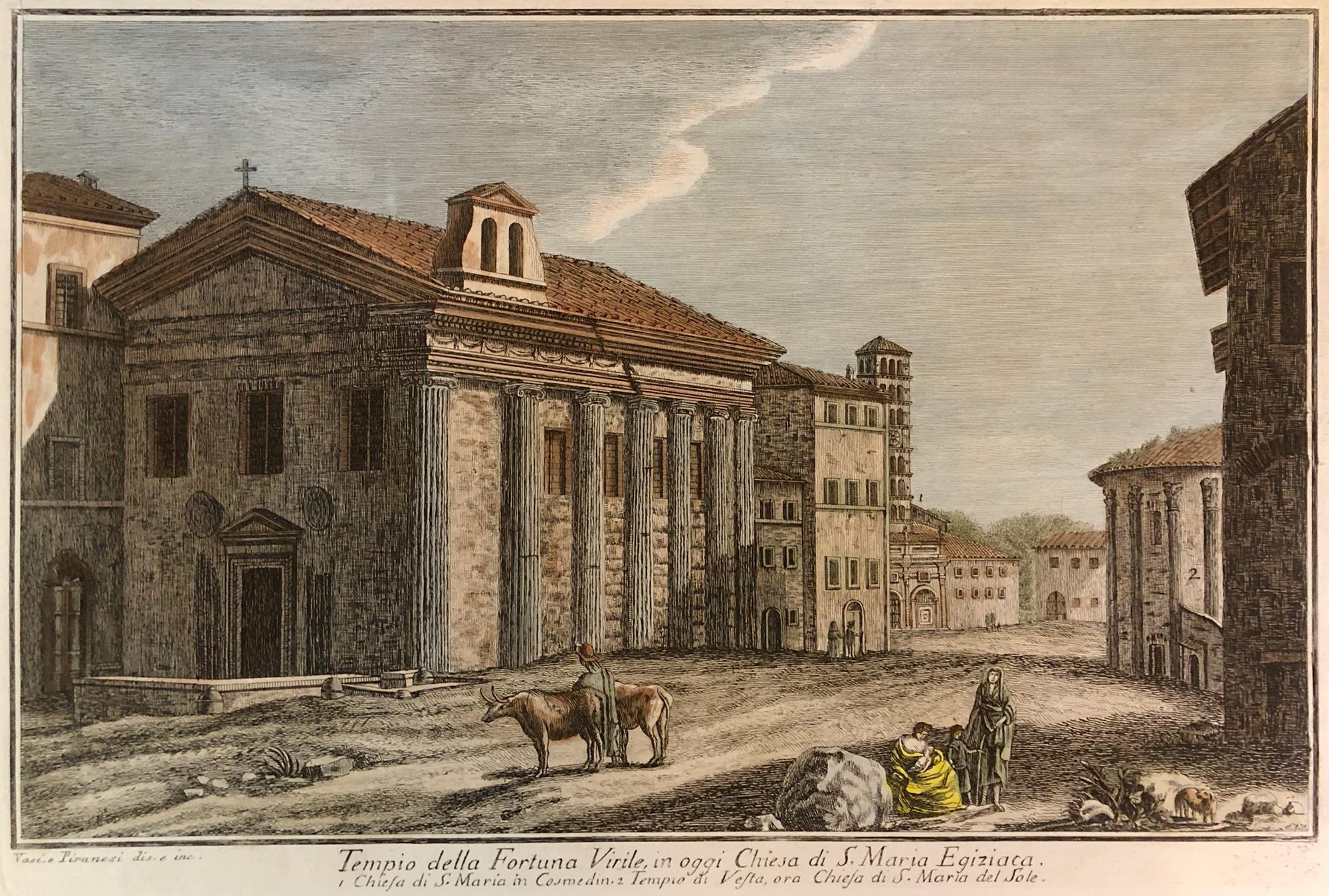Items Similar to Four original etchings of women from 'Aula Veneris' series by Wenceslaus Hollar
Want more images or videos?
Request additional images or videos from the seller
1 of 12
Wenceslaus HollarFour original etchings of women from 'Aula Veneris' series by Wenceslaus Hollar1643
1643
About the Item
Presented here as a group are four original etchings of women in European national dress from the master printmaker Wenceslaus Hollar's series "Aula Veneris: sive, Varietas foeminini sexus (The Court of Women: or, the Variety of the Most Feminine Sex)". Prints of men and women in costume were a popular genre for collectors of the seventeenth century. Hollar would have seen these simple, small-scale prints as an opportunity to take advantage of that market, and he produced several groups of costume prints in the 1630s and 1640s.
He began self-publishing "Aula Veneris" in 1643 after his primary patron in London, Thomas Howard, the Earl of Arundel, left for Austria preceding the English Civil War. The series began under the title Theatrum Mulierum (The Theater of Women) before being retitled after the artist emigrated to Antwerp. Though the plates would suggest a desire to create an encyclopedic grouping of women's costume, he appeared to have planned for the series to be open-ended: the prints were likely sold individually rather than in bound books or portfolios, as no collection of them today has the same combination. Nonetheless, this allowed the series the flexibility to be amended with new additions in later decades, adding to its international breadth.
Girl from Zurich in wedding dress (Virgo nuptialis Tiguriensis), upper left
A Women of Prague (Mulier Pragensis), upper right
Unmarried woman from Zurich (Virgo Tiguriensis), lower left
Strasbourg bride (Virgo nuptialis Argentinensis), lower right
Etchings in black on wove paper, each trimmed to plate edge and tipped
3.5 x 2.25 inches, each sheet
21.5 x 21.5 inches, frame
each signed in the plate, lower left
Framed to conservation standards using archival materials including 100 percent rag matting and mounting. Housed in a gold finish wood moulding.
Prints in good and stable condition; some wrinkling in each corner from tipping; frame in overall good condition with some losses to gold finish.
Wenceslaus Von Prachna Hollar was a prolific and accomplished Bohemian graphic artist of the seventeenth century. His work embraced a great variety of subjects, including scenes from the bible, historical pictures, maps, portraits of his chief contemporaries, views of cities, flower and fruit pieces, and various illustrations to books. His clever sketches of costume, his views of old London and other cities are invaluable to the historian. His engravings are executed with much spirit and carefully finished. Having produced more than 3000 different prints during his career, his works can be found in every major museum collection from the Metropolitan Museum of Art to the National Gallery in London.
Source: Hughes, Heather. "Luxury and Morality: Fashioning Englishness in Seventeenth-Century Costume Prints," in 'Clothing As Culture: Delineating National Character In Costume Prints,' c. 1600-1650. PhD diss., University of Pennsylvania, 2017.
- Creator:Wenceslaus Hollar (1607 - 1677, Czech)
- Creation Year:1643
- Dimensions:Height: 21.5 in (54.61 cm)Width: 21.5 in (54.61 cm)
- Medium:
- Movement & Style:
- Period:
- Condition:Prints in good and stable condition; some wrinkling in each corner from tipping; frame in overall good condition with some losses to gold finish.
- Gallery Location:Milwaukee, WI
- Reference Number:
About the Seller
4.9
Platinum Seller
These expertly vetted sellers are 1stDibs' most experienced sellers and are rated highest by our customers.
Established in 1966
1stDibs seller since 2017
390 sales on 1stDibs
Typical response time: 1 hour
- ShippingRetrieving quote...Ships From: Milwaukee, WI
- Return PolicyA return for this item may be initiated within 14 days of delivery.
More From This SellerView All
- 'Near Mrs. Teshmakers, Edmonton' original etching by John Thomas SmithBy John Thomas SmithLocated in Milwaukee, WIThe present is one of the many prints John Thomas Smith produced of English cottages and vernacular architecture. This example, a view of a cottage in Edmonton, is closely related to...Category
1790s Old Masters Landscape Prints
MaterialsPaper, Etching
- 'The Smoker (Le Fumeur)' original etching by Cornelis-Pietersz BegaBy Cornelis BegaLocated in Milwaukee, WI'The Smoker (Le Fumeur)' is an original etching by the celebrated Dutch painter and printmaker Cornelis-Pietersz Bega. It presents a genre scene of the type Bega was best known for: Bega's principal subjects were genre representations of taverns, domestic interiors and villages. He depicted nursing mothers, prostitutes, drunks, gamblers and fools such as quack doctors and alchemists. In this case, he shows a man seated on a chair with his foot on a flat stool and holding a smoking pipe. For Bega, this representation was more of a caricature than it was an image of a specific person, and such genre scenes would have held allegorical and symbolic meaning for the seventeenth-century viewer. During the seventeenth century, the Dutch of all levels of society consumed tobacco and alcohol, and these were an important part of the Dutch economy and a major source of wealth. At the same time, however, moralists and ministers sought to curb intoxication: they openly described drinking and smoking as sinful, immoral, and a general threat to one’s reputation. This paradox is reflected in prints such as this, which inherently carry the national pride of the Dutch economy alongside a moral warning in a print that could be just as easily consumed and collected. 2.5 x 2.25 inches, print 12.38 x 10.38 inches, frame Framed to conservation standards using archival materials including 100 percent rag matting and mounting materials. Housed in a gold finish Spanish-style wood moulding. Overall good and stable condition; margins cut to plate; some wrinkling in the corners from previous mounting; housed in a new custom frame. Cornelis Bega was born into prosperous circumstances. His mother, Maria Cornelis, inherited half the estate (gold, silver, paintings, drawings and prints) and all of the red chalk drawings of her father, Cornelis Cornelisz van Haarlem, a renowned Mannerist artist. Bega's father was Pieter Jansz Begijn (d 1648), a gold and silversmith. Like other family members, Bega was probably Catholic. Houbraken's claim that Bega studied with Adriaen van Ostade is likely to be correct; this was probably before 24 April 1653, when Bega joined Vincent Laurentsz. van der Vinne in Frankfurt for a journey through Germany, Switzerland and France. Bega had returned to Haarlem by 1 September 1654, at which time he joined the Guild of St Luke; he was already a competent draughtsman, as indicated by his first extant dated work, Interior with a Nursing Mother (1652; Frankfurt am Main, Städel. Kstinst.), and by a remarkable double portrait (Amsterdam, Rijksmuseum) drawn by him and Leendert van der Cooghen in 1654. Bega painted, drew, etched and made counterproofs in a wide variety of materials on different types of small-scale supports. He may have been the first Dutch artist to make monotypes, but this remains controversial. Approximately 160 paintings, 80 drawings and six monotypes by Bega have been catalogued, as well as around 34 etchings. Bega's principal subjects were genre representations of taverns, domestic interiors and villages. He depicted nursing mothers, prostitutes, drunks, smokers, gamblers and fools such as quack doctors and alchemists. Less common subjects include the ridiculed or pestered woman, as in Two Figures and Mother with a Spirits Bottle (c. 1662; Gouda, Stedel, Museum Catharina Gasthuis) and The Inn (etching), as well as witty satires on traditional scenes of middle-class music-makers, such as the Music Lesson (1663; Paris, Petit Palace). Bega's early paintings, such as the Weaver's Family (c. 1652; St Petersburg, Hermitage), are freely executed, dark and coarse, recalling the many-figured peasant subjects of van Ostade. Between c. 1660 and 1664 he began to paint genre scenes with fewer figures, which are finely articulated, colourful and psychologically expressive, for example Two Men Singing (1662; Dublin, N.G.). His exquisite, late fijnschilderen ('fine painting') manner, evident in The Alchemist (1663; Malibu, Getty Museum), compares well with that of Gerrit Dou. As a draughtsman Bega is noted for his single-figure studies, executed mainly in black and white chalk on blue paper or red chalk on white paper. None of the studies, which were drawn naer het leven (from life), seem to relate to a painting or etching. Bega traded drawings or shared models with other artists of the Haarlem school, including van der Cooghen, Gerrit Berckheyde, Dirck Helmbreker and Cornelis Visscher. These artists drew chalk figure studies in a very similar style, characterised by regular and precise parallel shading and well-defined forms; their drawings, especially those of Bega and Berckheyde, have been frequently confused. Unlike the realistic figure studies, Bega's etchings depict interiors with figures or single figures in the manner of van Ostade; the compositions, often with masterful chiaroscuro effects, reflect most closely the paintings of the 1650s. Bega is likely to have remained in Haarlem, where he paid dues to the Guild in 1661. He probably died from the plague; fees for his expensive funeral at St. Bavo's were paid on 30 August 1664. Among the artists he influenced were Thomas Wijck, Jan Steen, Richard Brakenburg (1650-1702) and Cornelis Dusart. Painters such as R. Oostrzaen ( fl ?1656) and Jacob Toorenvliet...Category
17th Century Old Masters Figurative Prints
MaterialsPaper, Etching
- "Four Women in National Costumes, " Etchings by Wenceslaus HollarBy Wenceslaus HollarLocated in Milwaukee, WI"Four Women in National Costumes" is a set of four original etchings by Wenceslaus Von Prachna Hollar. 3 5/8" x 2 3/8" each print 19 1/8" x 18 1/2" frame Wenceslaus Von Prachna Ho...Category
17th Century Old Masters Figurative Prints
MaterialsEtching
- "Mythological Scene-Satyr & GoatHerder"an Original Etching signed by CastiglioneBy Giovanni Benedetto CastiglioneLocated in Milwaukee, WI"Mythological Scene--Satyr & Goat Herder" is an original etching signed by Italian artist Giovanni Benedetto Castiglione. It depicts a satyr lounging on the left and an approaching g...Category
Mid-17th Century Old Masters Landscape Prints
MaterialsEtching
- "Etude d'Une Scene du Brigands (Study), " Etching by Claude Gellee (Le Lorrain)By Claude LorrainLocated in Milwaukee, WI"Etude d'Une Scene du Brigands (Study with Brigands)" is an etching by Claude Gellee (Le Lorrain). This etching is in the collections of the Metropolitan Museum, the Art Institute of...Category
Mid-17th Century Old Masters Figurative Prints
MaterialsEtching
- "The Singer" Original Black & White Etching of Figures by Cornelis-Pietersz BegaBy Cornelis BegaLocated in Milwaukee, WI"The Singer" is an original etching by Cornelis-Pietersz Bega. It depicts a performer and onlookers. Publisher: Pearce #50. 4" x 3" art 16 1/2" x 13 1/2" frame Cornelis Pietersz Be...Category
Mid-17th Century Old Masters Figurative Prints
MaterialsEtching
You May Also Like
- "Il Maestro" Print after Franceso Barbieri called Guercino (1591-1666)By Giovanni Francesco Barbieri (Il Guercino)Located in Hallowell, MEOld Masters Print of Music Teachers after Franceso Barbieri called Guercino (1591-1666). This 13 x 21 inch etching is titled The Music Teachers after Franceso Barbieri called Guercino (1591-1666) Measurements: 13"x21". Susquehanna Antique Company...Category
18th Century Old Masters Figurative Prints
MaterialsPaper, Etching, Ink
- The Plank Bridge – Landschap met een bruggetje van plankenBy Anthonie WaterlooLocated in Middletown, NYEtching on thin cream laid paper with a partial "M" or "W" watermark, 5 x 5 15/16 inches (126 x 150 mm), thread margins. Inscribed in the plate in the upper-right: “Antoni Waterlo fe...Category
17th Century Old Masters Landscape Prints
MaterialsEtching, Laid Paper
- To Drink in ExcessBy Cornelis VisscherLocated in Middletown, NYEtching on cream laid paper, full margins. Trimmed at the plate mark. Scattered light caramel colored areas of discoloration in the sheet corners, light skinning on the verso at the ...Category
Mid-17th Century Old Masters Portrait Prints
MaterialsEtching, Laid Paper
- The Spectacle SellerBy Adriaen Jansz van OstadeLocated in Middletown, NYEtching and drypoint on cream laid paper, 4 x 3 3/8 inches (102 x 86 mm), 1/4 inch margins. Signed in the plate, lower left corner. The 3rd state (of 6), after the rounding of the pl...Category
Mid-17th Century Old Masters Figurative Prints
MaterialsEtching, Laid Paper, Drypoint
- The QuacksalverBy Adriaen van OstadeLocated in Middletown, NYEtching on cream laid paper. 1/4 inch to 1/2 inch margins. In good condition with a band of minor discoloration along top and bottom sheet edge verso. One circular 1.5 inch- sized ar...Category
Mid-17th Century Old Masters Figurative Prints
MaterialsLaid Paper, Etching
- Veduta del Tempio della Fortuna Virile, from Raccolta delle più belle Vedute ...By Giuseppe VasiLocated in Middletown, NYBy Giuseppe Vasi after Giovanni Piranesi: Etching and engraving with hand coloring in watercolor on laid paper with an E and R watermark, full margins. Minor...Category
Late 18th Century Old Masters Landscape Prints
MaterialsWatercolor, Laid Paper, Engraving, Etching
Recently Viewed
View AllMore Ways To Browse
Antique Series
From The Four Corners
Antique Wood Mouldings
Antique Wood Moulding
Antique Women Dresses
Antique Wedding Frames
17th C English
Old Map Frames
Antique Clothing Museum
Original Costume Sketches
Original Etchings Map
Woman With Fruit
Costume National Dress
Austrian 17th
Antique Womens Clothing
Antique Spirit House
Map Dress
Antique Sex





